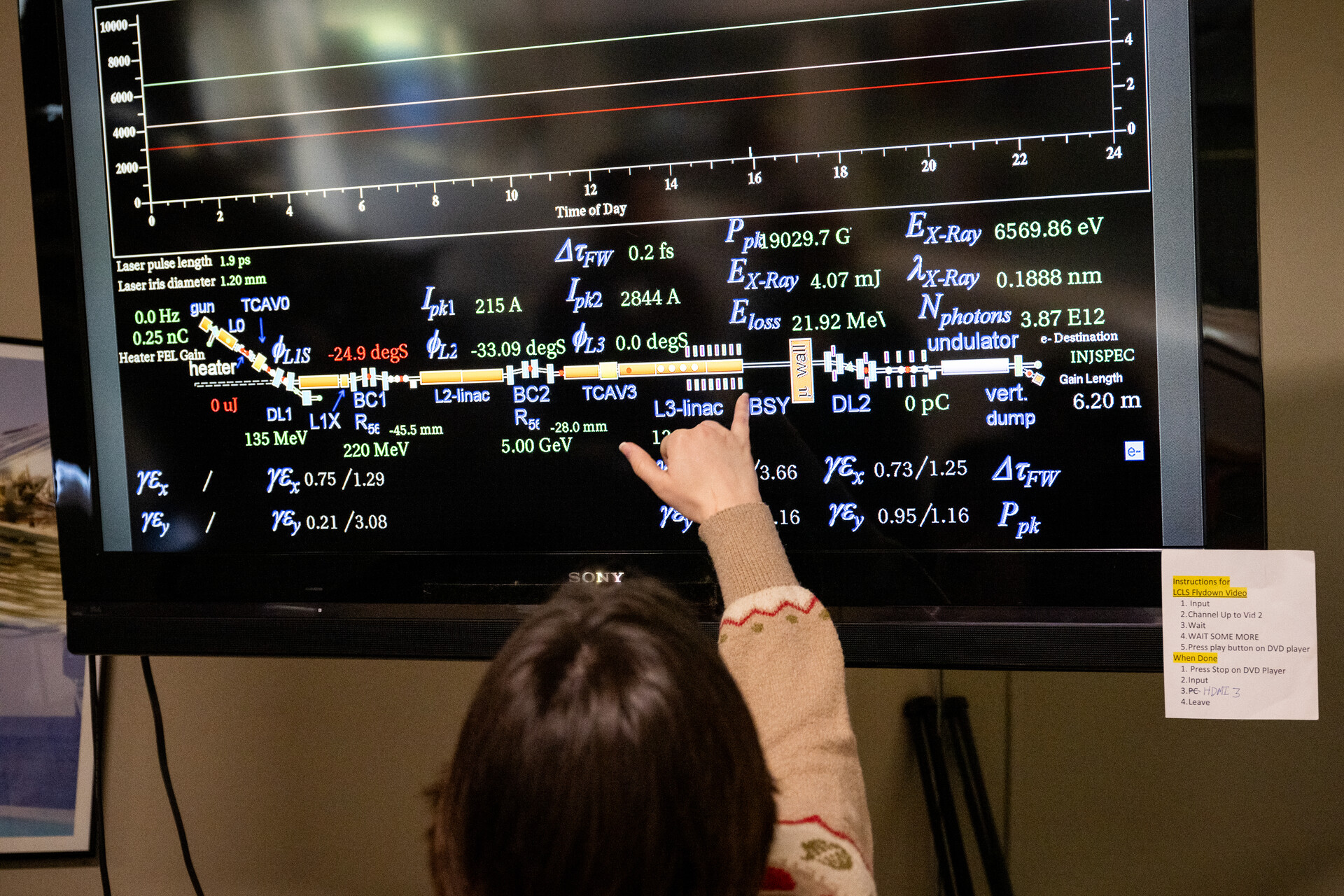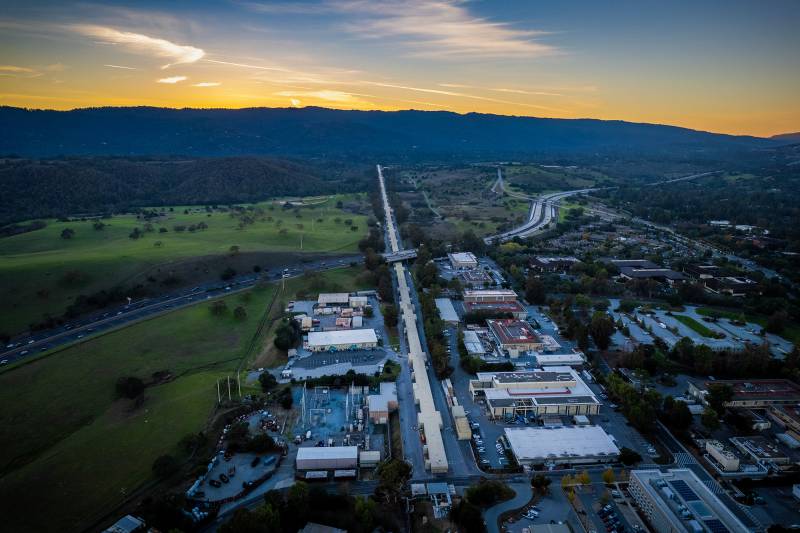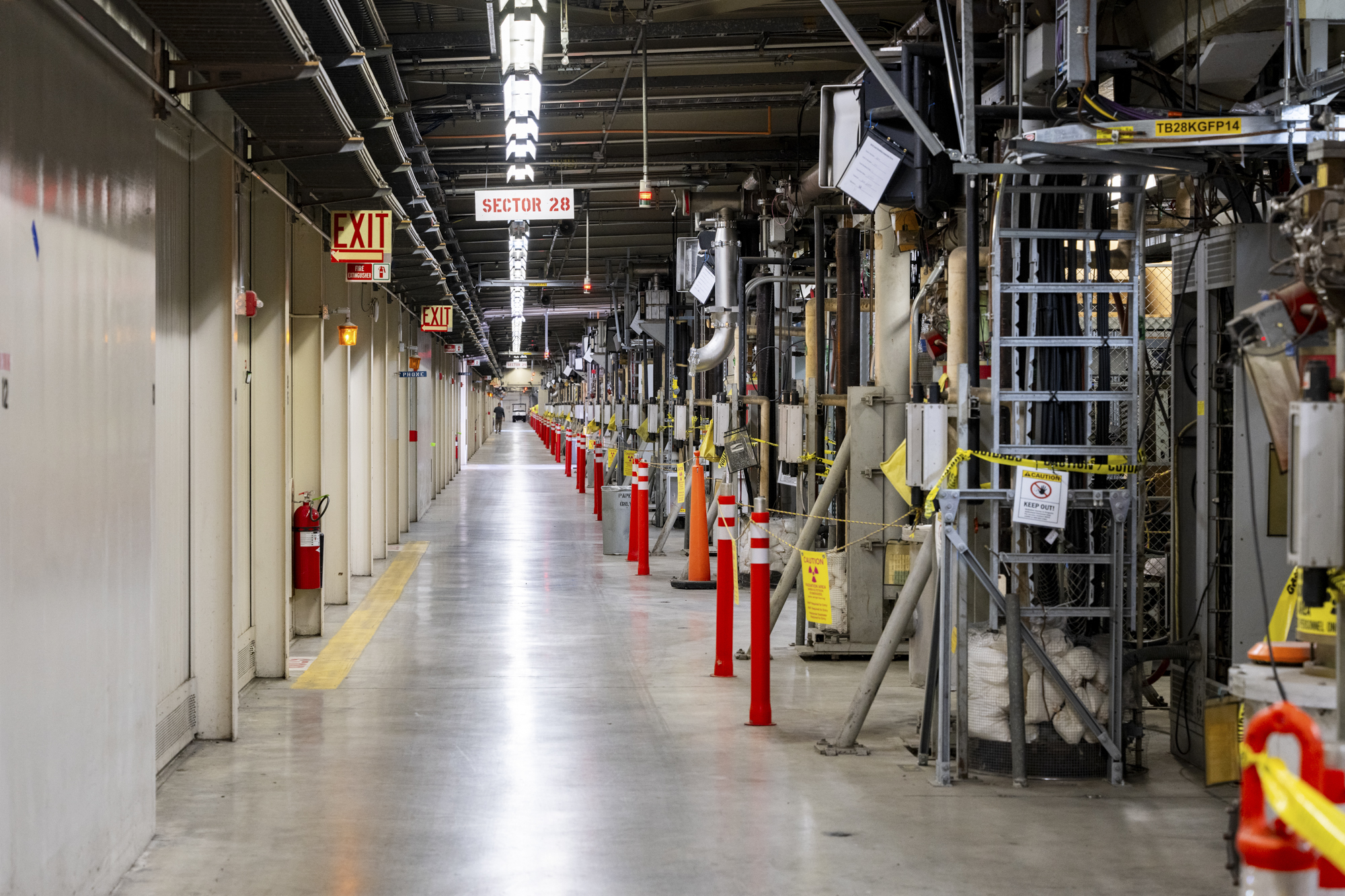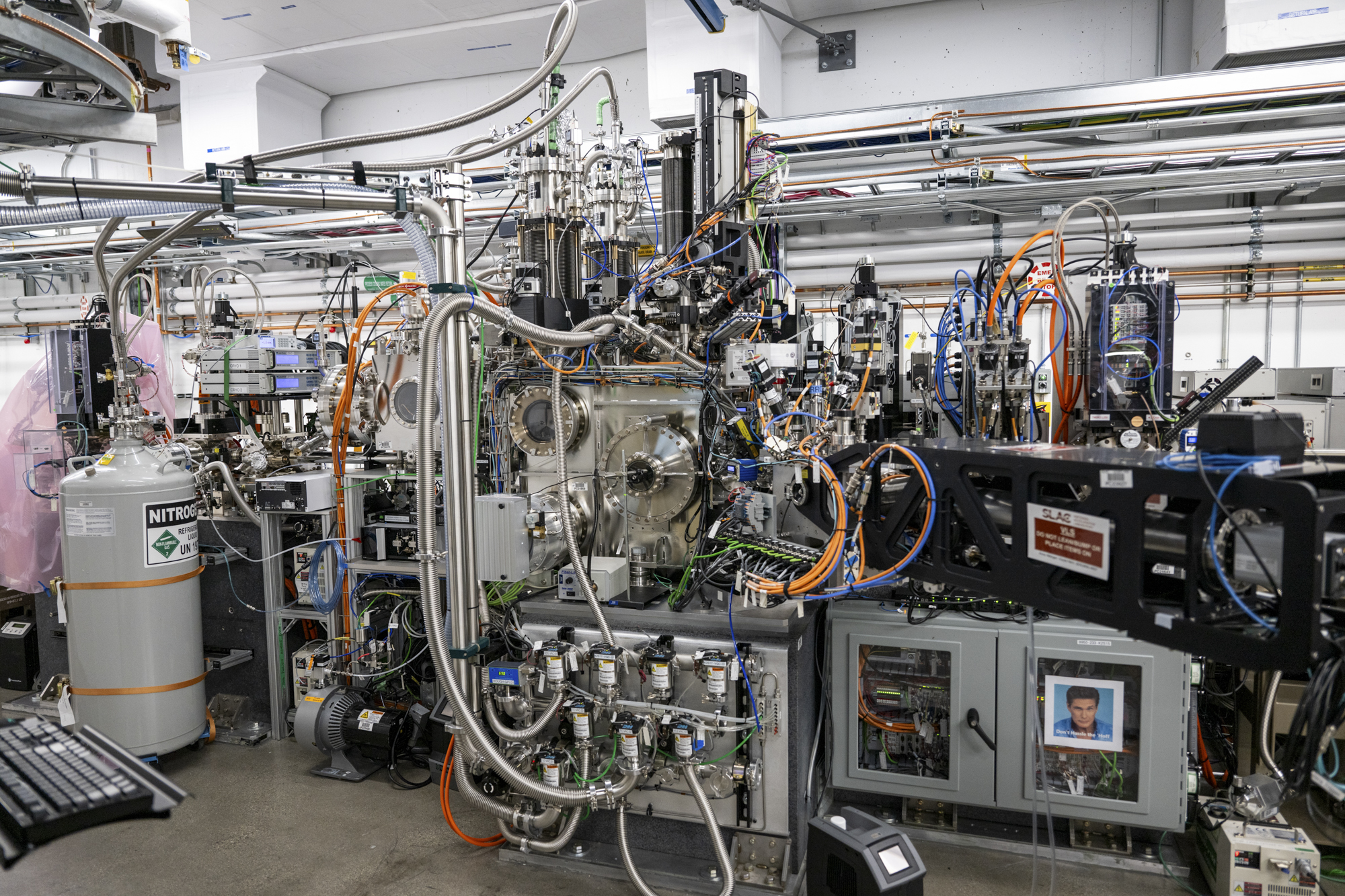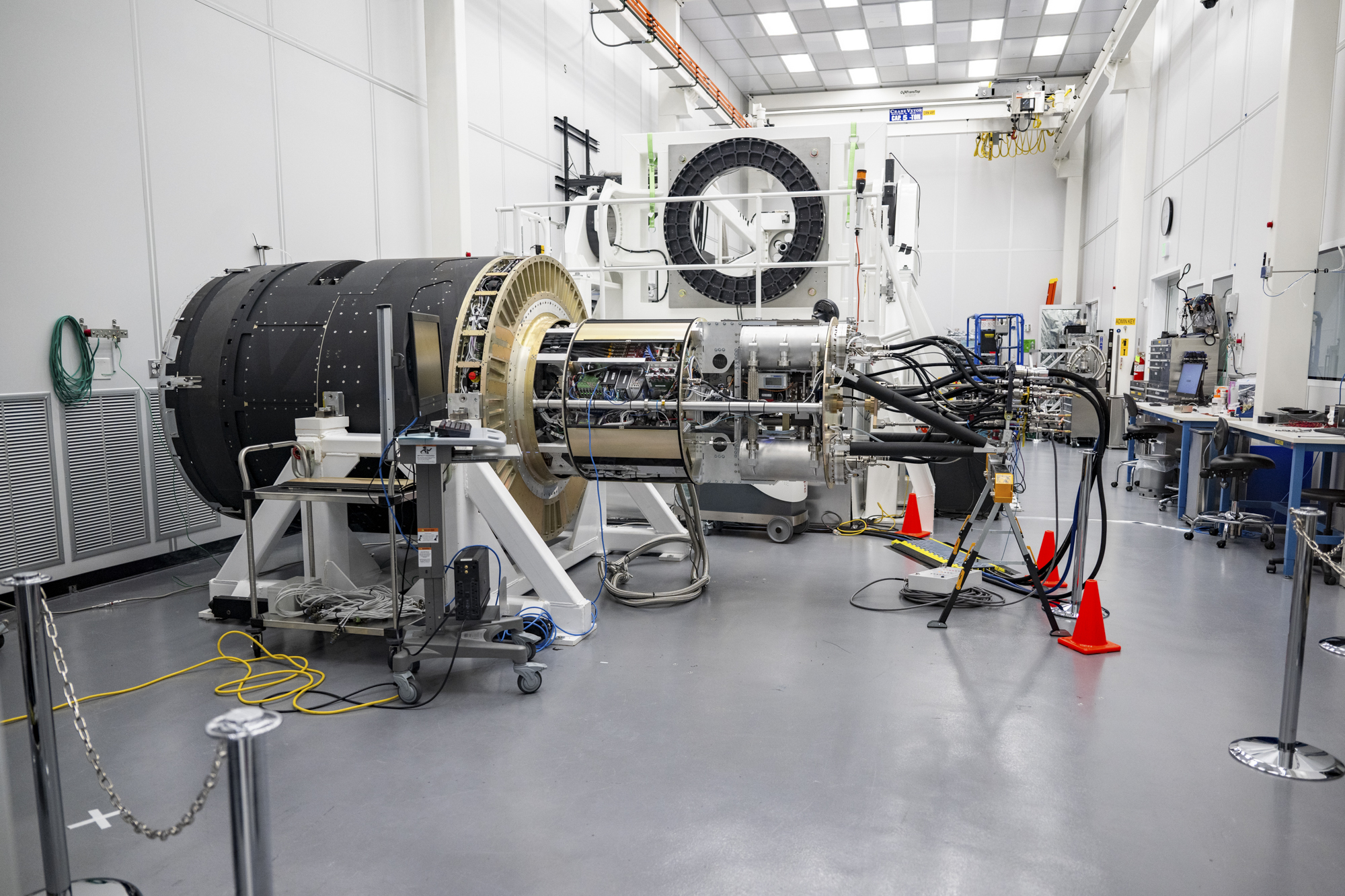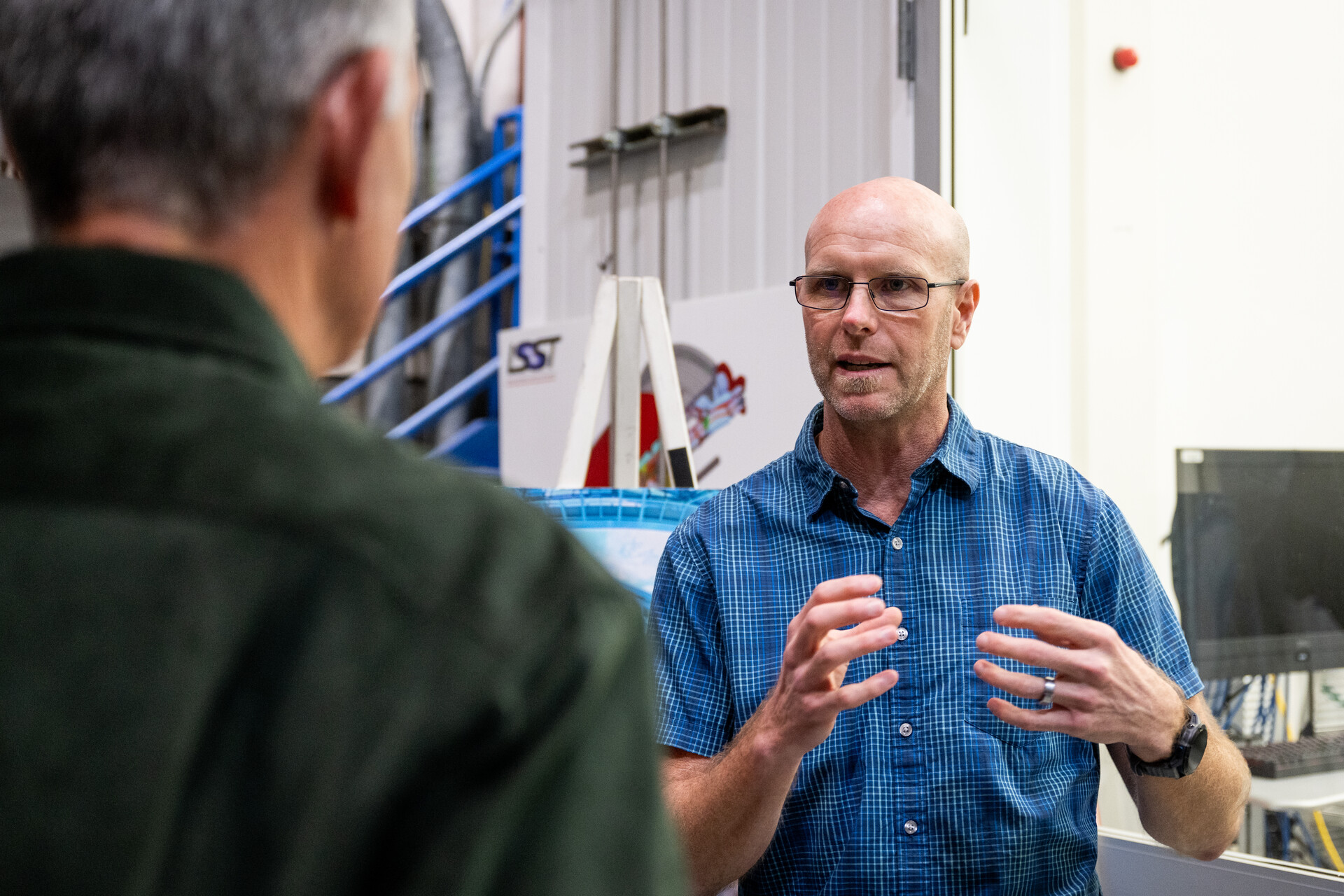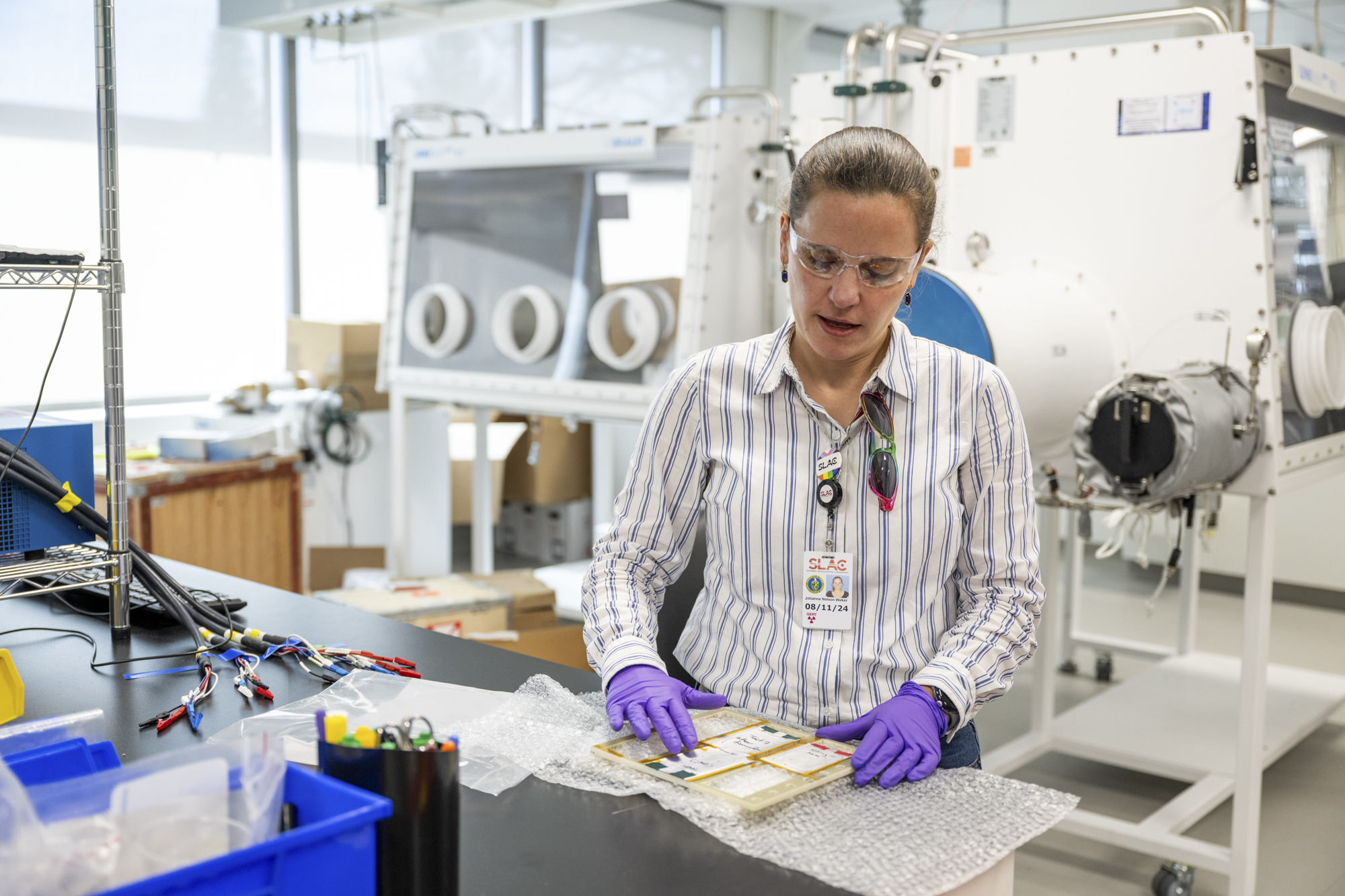Episode Transcript
Olivia Allen-Price: Hey everyone! I’m Olivia Allen-Price. And this is Bay Curious.
Should you find yourself driving on Interstate 280, just south of the Sand Hill Road exit, near Stanford, there is this overpass that crosses over a long, skinny building.
And when I say long, I do mean looooong. At nearly 2 miles, it’s one of the longest buildings on the planet.
Eric Nelson of Petaluma has wondered about it for years.
Eric Nelson: What’s that huge, long building on the side of 280 that I drive by all the time but really have no idea what it is?
Olivia Allen-Price: Turns out, drivers crossing over that long, skinny building are mere meters away from one of the most advanced technology labs in the world. A place where scientists are exploring how the universe works at the biggest and smallest levels. Inside the lab, particles travel at speeds that would put any hot rod to shame. I’m talking 669 million miles per hour, that’s just shy of the speed of light!
We called up Stanford to ask what’s up with this thing? And they said “Come on over! We give tours!” So today on the show we’re heading inside the SLAC National Accelerator Laboratory in Menlo Park. SLAC used to stand for the Stanford Linear Accelerator Center, but now it’s just SLAC. Not an acronym.
Get ready to have your mind a little bit blown. Or a lotta bit blown, if you zoned out during high school physics class like I did. That’s all just ahead on Bay Curious! I’m Olivia Allen-Price.
Sponsor message
Olivia Allen-Price: Today we’re exploring a massive, 426-acre campus near Stanford where scientists are conducting all sorts of cutting edge research that has implications for astronomy, clean energy, medicine and more.
Our question asker, Eric Nelson, is along for the ride with KQED’s Rachael Myrow. She was an English major in college, so hopefully, she can explain some of this to us in plain English.
Rachael Myrow: Look, if you’re like me, metaphors help to get a grip on complex scientific concepts. So before we get out of the tour van to visit SLAC — that’s SLAC with a C, not with a CK like the office app — I want to make a quick stop in the 19th century.
Crackle of phonograph
Rachael Myrow: Just to help illustrate the basic concept behind a linear accelerator, let’s review a scientific first that happened in Palo Alto before Stanford was Stanford.
Sound of a horse running
Rachael Myrow: Leland Stanford, the super rich railroad baron, bred and raced horses on the land he later built the university on. In the 1870s, Stanford hired a guy named Eadweard Muybridge to photograph those horses
Sound of a camera clicking twice
Rachael Myrow: To get a closer look at their strides. Closer than strides had ever been observed before. Now, Muybridge had a scientific bent to his thinking. So after some annoyingly blurry snaps he had an electric-powered battery of 12 cameras installed at Stanford’s race track, to catch a horse running past in a series of freeze frames.
Sound of an old-timey projector rolling
Olivia Allen-Price: Hey, I know this story! When Muybridge ran all those photographs together at high speed, he got what, today, we call a movie. The father of “motion pictures.”
Rachael Myrow: Exactly. Now imagine a much longer racetrack. And imagine, not horses running past, but tiny, tiny subatomic particles.
Buzzing sound
Rachael Myrow: The building that houses this thing is almost two miles long and the cameras, instead of recording sunlight bouncing off horses, use ultra bright x-ray light those particles throw off to create freeze frame movies of molecules. Also, when they move fast, they buzz. A lot.
Rachel Spurlock: That is actually the sound of our accelerator operating.
Rachael Myrow:That’s Rachel Spurlock, working on her PhD in Chemical Engineering at Stanford, and our tour guide in the visitor alcove of SLAC’s Linear Accelerator.
Spooky sound effect
Rachael Myrow: This is what drivers on 280 pass over regularly — absolutely clueless — because from the outside, the linear accelerator building looks like a long, skinny, beige warehouse.
Rachael Myrow (in scene): What are the pros and cons of having a linear accelerator, versus a circular one?
Rachel Spurlock: Yeah, Nowadays, I think it would be very rare to find a linear accelerator the way we have here at SLAC. Most are built circular. But we also have some accelerator research going on here at SLAC. One portion of our original 1960s accelerator is dedicated to research to shorten the length of accelerators.
Rachael Myrow: When this was built in the 1960s, they needed a two-mile long building so there’s time and space enough to “accelerate” electrons to close to the speed of light. The building is so long, you can’t see to the end of it inside.
Rachel Spurlock: Our accelerator moves 120 bunches of electrons per second.
Rachael Myrow (In scene): They make a big noise for such small particles.
Rachel Spurlock: They do. They do. A lot of people who come visit think that the noise is actually the fluorescents, but it’s the accelerator.
Rachael Myrow: Inside the building that houses them, two long tubes stretch to what seems like infinity to the human eye — one large aluminum tube on the bottom, and a smaller copper tube on top, where the electrons are. What’s moving the electrons along? More than 150 microwave generators called “klystrons.”
Rachel Spurlock: The exact same thing that you have in your kitchen at home in your microwave, except about 60 times stronger.
Rachael Myrow: You could bake a potato in one of these klystrons in a millisecond. Which impressed our question asker, Eric.
Eric Nelson: I want to come here to fix my TV dinner tonight!
Rachael Myrow: The whole shebang is surrounded by a lot of yellow “caution” tape and bright, plastic, orange delineators, to keep people from touching things they’re not supposed to touch. How did this thing get here? Let’s go back to the end of World War II.
During WWII, physicists working in Los Alamos, New Mexico developed the atom bomb. After that war, Stanford physicists wanted to get a better look inside the atom. But just like Muybridge, they needed a specialized, cutting edge contraption to do it. So they pitched the idea of a linear accelerator to the Atomic Energy Commission, to explore the basic building blocks of the universe, as explained here in a 1964 documentary called “The Worlds Within.”
Archival Video: The largest and most expensive tool in the world, in a pastoral setting. Music. What the nation is investing in this accelerator, and the contribution which Stanford is making in terms of its land, are used to buy knowledge and fundamental understanding of nature.
Rachael Myrow: Over the following years, SLAC won 3 Nobel prizes for its early research, including: the discovery of two fundamental particles, proving protons are made of quarks, and showing how DNA directs protein manufacturing in cells.
Olivia Allen-Price: Not too shabby. But of course, science has moved on from these first, basic lines of inquiry.
Rachael Myrow: Yes! Now, as then, SLAC functions like a cutting edge research hacker space. Anybody can propose a project, and if receiving the thumbs up from a research committee, do their experiment at one of the facilities. Which are constantly being upgraded and modernized to allow for scientists to stay on the cutting edge of research.
Rachel Spurlock: We no longer use our linear accelerator for those particle physics experiments that I mentioned were kind of the foundation of SLAC when it was first conceived and developed.
Rachael Myrow: In fact, if you were flying over the campus, you’d see what looks like a clutch of big warehouses. Nondescript on the outside, chock full of scientific labs on the inside: wires, tubes, cylinders and tanks and such.
Rachel Spurlock: If your proposal is accepted, you can come and use our facilities absolutely for free, as long as you publish your results. If you don’t want to publish your results, it can get very expensive.
Rachael Myrow (in scene): And would those mostly be, I guess, private corporations that are hoping to profit from the results of their research?
Rachel Spurlock: Exactly.
Olivia Allen-Price: What kind of research happens at SLAC today?
Rachael Myrow Soooo many kinds.
Music starts
Rachael Myrow: And not just using the linear accelerators. Yes, plural. SLAC is home to a campus full of different lab spaces doing different things, using X-rays, lasers and electron beams for groundbreaking experiments.
Olivia Allen-Price: Like what? Anything concrete a regular person would understand?
Rachael Myrow: Here’s another metaphor. You know the MRI machine doctors use to get a 3-D picture of your organs and tissues?
Olivia Allen-Price: Yup.
Rachael Myrow: Now imagine using that x-ray light I mentioned earlier — the x-ray light that particles speeding through a linear accelerator throw off — to look at your insides! at the molecular level!
Matthias Kling: With X-ray light, we’re able to look at atoms. So we’re looking at microscopic details of what matter is doing.
Rachael Myrow: Matthias Kling is Director of Science, Research and Development at the Linac Coherent Light Source at SLAC. I know, Olivia, that’s a mouthful.
Scientists are trying to find ways to make the equipment smaller, cheaper, and capable of operating at room temperature, so one day the equivalent of an MRI machine could be available to many more people. At their doctor’s offices, among other places.
Matthias Kling: We’re striving to stay at that frontier. So that’s why we’re constantly thinking about, OK, ‘What is it that would enable us to answer the next big question?’
Rachael Myrow: Watching chemical reactions as they happen, at the molecular level, could lead to groundbreaking insights in a variety of fields, from computing to pharmaceuticals to aerospace to clean energy.
When Matthias was done with his part of the tour, I turned to our question asker Eric, whose eyes were spinning as fast as mine.
Rachael Myrow (in scene): Any questions?
Eric Nelson: No, I’m just blown away with the people who founded this originally. If they had a vision of where they would be now. If you could, Like, put them in a time machine. And like, ‘Here you are. Did you have any concept of this little tube you built, what impact it would be having on the world?’ That just blows me away.
Rachael Myrow: And now to a camera big enough to capture the night sky.
Music starts
Rachael Myrow: We took a van over to a hangar where SLAC LSST Camera Deputy Project Manager Travis Lange stood with us in front of a brightly lit clean room, home to…
Travis Lange: The world’s largest digital camera. 3.2 giga pixels. Considerably larger than, you know, your iPhone camera. It is going to be mounted on a mountaintop in northern Chile. And we are using it to do a survey of the sky.
Rachael Myrow: It’s not just that this thing is massive, the size of a 3 ton car, with a lens bigger than 5 feet in diameter. Or that it can capture a huge swath of sky with every photograph.
Travis Lange: It will take images, and within 60 seconds of a shutter closing, it will do a bunch of analysis. It will do comparisons to previous images that it has, and it will detect that there’s things that are different.
Rachael Myrow: What’s the point of a camera this big? One that costs $200 million dollars to construct?
Travis Lange: In a very large image, there’s going to be thousands and thousands of things. So every single image, you’re going to get a lot of things that are different from the previous time. So there are some things in cosmology that happen very slowly. Most things, actually, right? The universe is a very slow moving thing. But there are some things that occur very fast. So things like super novaes. Or asteroids that are coming through our solar system. So those kind of things, those very transient events, are very hard to detect.
Rachael Myrow: This camera can detect them, and then scientists can direct astronomers working with bigger, more powerful telescopes to point them at the thing that is happening.
Travis Lange: And get a really in depth image in real time.
Olivia Allen-Price: Rachael, that’s mind blowing.
Rachael Myrow: But wait, there’s more! You might be wondering at this point whether anything SLAC researchers are working on could be ready for the rest of us to use in the near future.
Olivia Allen-Price: Yes, yes I am.
Rachael Myrow: That’s where Johanna Nelson Weker comes in. She’s a lead scientist at the SLAC-Stanford Battery Center. She and her colleagues are researching cleaner, greener forms of energy storage.
Johanna Nelson Weker: One of the goals for making a battery for, not a vehicle, but putting it onto the grid, is for it to be longer duration than a standard lithium ion battery. If you want to store energy for more than 8 hours, lithium ion battery technology’s not good. It’s way too expensive and it doesn’t last.
Rachael Myrow: Scientists in Weker’s lab are also trying to make things inexpensive, sustainable and free of elements that lead to child labor and strip mining.
Johanna Nelson Weker: So we’re looking at things that are much cheaper. Can we make a battery out of rust, for example? Iron oxygen battery? Things that are, you know, ridiculously cheap, that you could bring the cost of storing energy down.
Rachael Myrow (in scene): Does that make the batteries more sustainable, more easily disposed of, et cetera, et cetera?
Johanna Nelson Weker: Not necessarily, but that’s also a goal we have.
Olivia Allen-Price: Rachael, this all sounds super cool. But I’m overwhelmed! Did our question asker Eric understand it all?
Eric Nelson: Absolutely. In fact, if you need a recap later, I’m sure I’ll be able to help, provide a recap. No problem at all. (Laughing)
Rachael Myrow: I hope I haven’t scared y’all off — because this is an awesome tour — and there are two to four of them a month available to the public. But they’re capped at 30 people at a time and I’m told they fill up pretty quick. Can’t recommend it highly enough.
Olivia Allen-Price: KQED’s Rachael Myrow, thank you so much.
Rachael Myrow: You’re welcome.
Music starts
Olivia Allen-Price: Big thanks to Eric Nelson for asking this week’s question.
Bay Curious is made in San Francisco at member-supported KQED.
If you are enjoying Bay Curious, would you do me a favor? Head to Bay Curious in the listening app of your choice, make sure you subscribe and make sure you turn on your auto downloads. That way you’re automatically getting every episode as soon as it comes out. And! It would be so nice if you could leave a rating and review for the show. You can do that on Apple Podcasts and Spotify. Five stars. A written review. Let us know what you’re enjoying about the show so we can bring you even more of it. Those are much appreciated. Thanks to everyone who has done so already. I know it only takes a minute, but wow does that minute mean a lot to us.
Our show is produced by Katrina Schwartz, Christopher Beale, and me, Olivia-Allen Price. Additional support from Jen Chien, Katie Sprenger, Cesar Saldana, Maha Sanad, Carly Severn, Bianca Taylor, Holly Kernan and the whole KQED Family.
